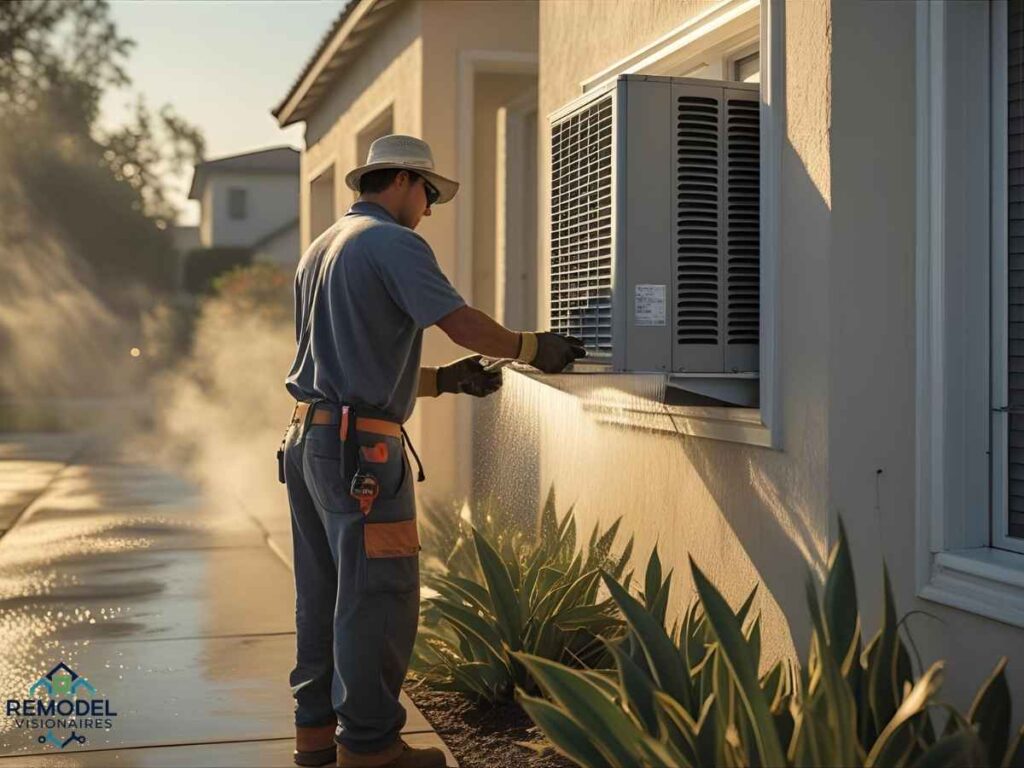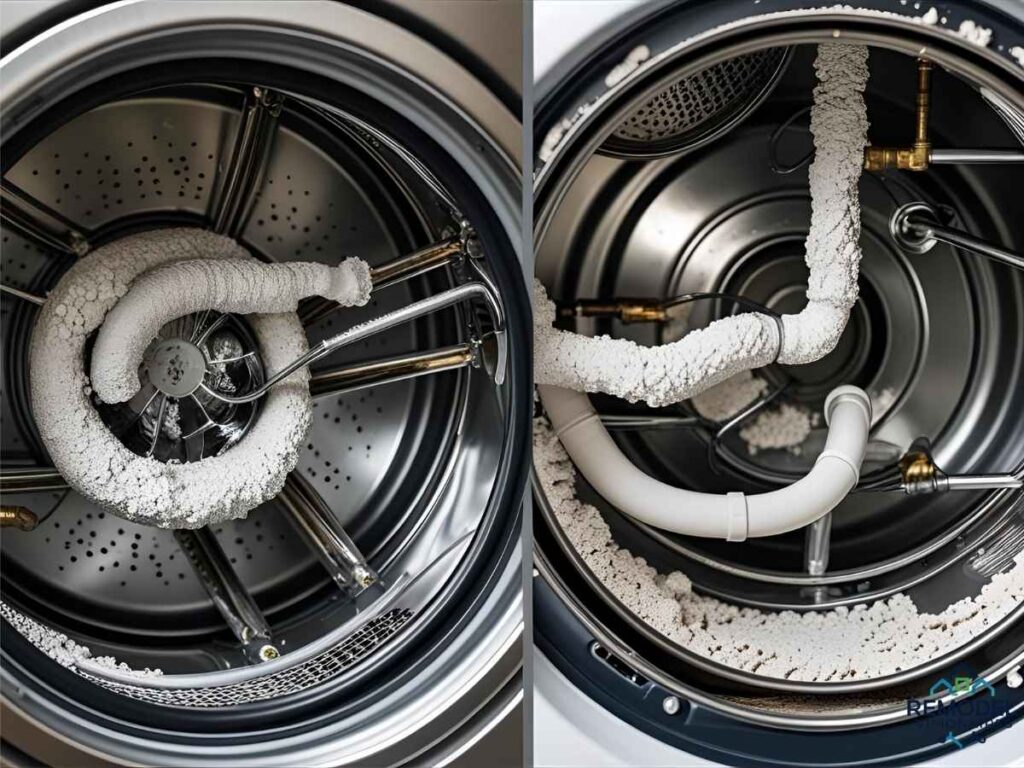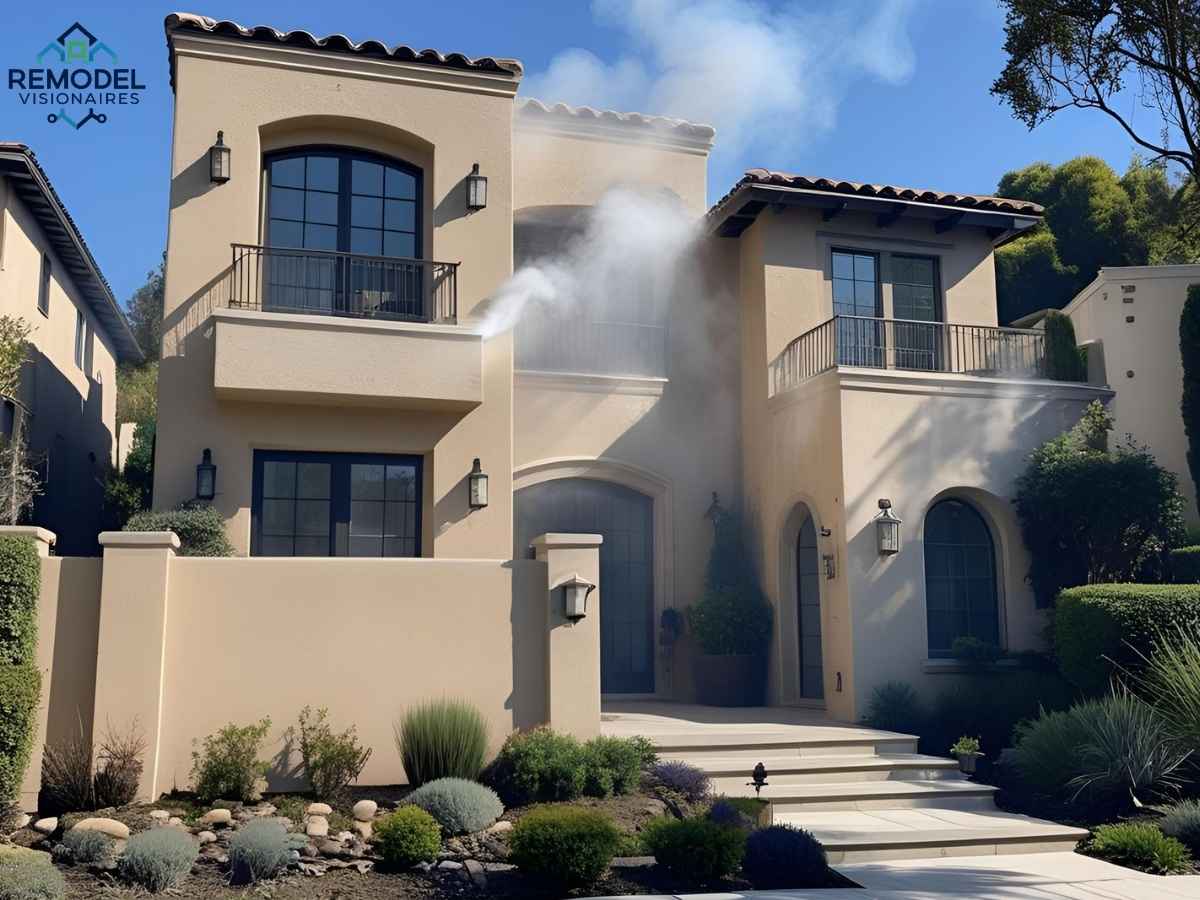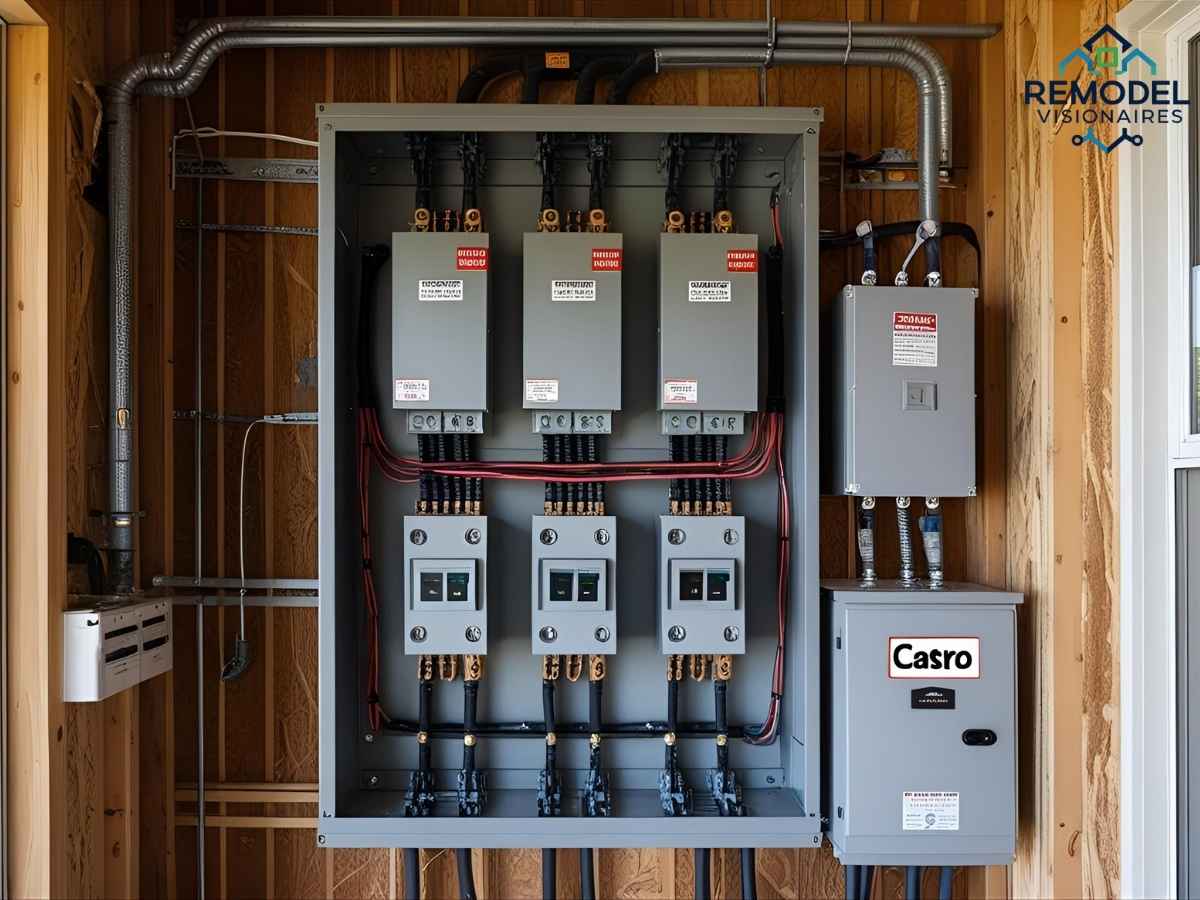Picture this: You’re cooling off in your Beverly Hills home on a sweltering August afternoon when your air conditioner suddenly gives out. Meanwhile, just 20 miles away in Pasadena, your neighbor’s washing machine breaks down from mineral buildup caused by the city’s notoriously hard water. Welcome to life in Los Angeles, where your home’s climate challenges can wreak havoc on your most essential appliances.
Table of Contents
Los Angeles presents a unique combination of environmental factors that put extraordinary stress on household appliances. From record-breaking heat waves and bone-dry Santa Ana winds to some of the hardest water in California, the City of Angels demands that homeowners take proactive steps to protect their investments. Understanding these climate impacts isn’t just about preventing costly repairs—it’s about ensuring your appliances perform efficiently when you need them most.
Los Angeles: A Perfect Storm for Appliance Stress
The Heat Island Effect Hits Home
Los Angeles experiences what scientists call an urban heat island effect, where temperatures can vary dramatically from neighborhood to neighborhood. Research from NASA’s Jet Propulsion Laboratory shows that temperatures in the Greater LA area can spike up to 9°F hotter than surrounding areas during heat events. In neighborhoods like Westlake in Central LA, which has only 5% vegetation coverage, temperatures run 9°F hotter than greener areas like Ernest E. Debs Regional Park.

This temperature variation means your appliances face different challenges depending on where you live. If you’re in Hollywood’s concrete jungle, your air conditioning unit works significantly harder than if you’re in tree-lined Beverly Hills. The LADWP reports that Los Angeles experiences almost 20 days per year with average heat index temperatures of 90°F or higher, with peaks reaching 113°F in recent years.
Santa Ana Winds: The Devil’s Breath
Those infamous Santa Ana winds aren’t just a fire hazard—they’re appliance killers too. These hot, dry winds originating from the Great Basin can gust up to 100 mph, creating extreme conditions that push your cooling systems to their limits. During Santa Ana events, which occur 10-25 times annually and can last up to seven days, humidity levels plummet to their lowest of the year while temperatures soar.
The combination of extreme heat and ultra-low humidity during these wind events forces air conditioners to work overtime. The winds also carry dust and debris that can clog filters and reduce system efficiency, particularly affecting outdoor units.
California’s Hard Water Challenge
Los Angeles water hardness averages between 10-15 grains per gallon (gpg), placing it firmly in the “hard” to “very hard” category. According to LADWP data, water hardness varies significantly across the city’s water quality areas:
- San Fernando Valley and Western LA: 8.6 gpg average (5.4-16.1 gpg range)
- Silver Lake, Downtown, and South LA: 9.8 gpg average (5.4-17.0 gpg range)
- Eastern LA and Harbor areas: 16.3 gpg average (16.1-16.4 gpg range)
This hard water contains high concentrations of calcium and magnesium minerals that accumulate in appliances over time, causing scale buildup, reduced efficiency, and premature failure.
How LA’s Climate Attacks Your Appliances
Air Conditioning Units: Fighting a Losing Battle
Your AC system faces a triple threat in Los Angeles. First, extreme heat reduces efficiency—most residential units are designed for 95°F days, but LA regularly exceeds 100°F. Second, the constant operation during extended heat waves causes compressor strain and increased wear. Third, dust from Santa Ana winds clogs coils and filters, further reducing performance.
During the September 2024 heat wave, Phoenix hit 116°F and Los Angeles saw similar extreme temperatures. These conditions force AC units to run continuously, often unable to maintain desired indoor temperatures. The result? Higher energy bills, system breakdowns, and shortened equipment lifespan.
Refrigerators and Freezers: The Silent Sufferers
Hard water affects refrigerators through their ice makers and water dispensers, causing mineral buildup that clogs lines and damages components. The extreme heat also forces these appliances to work harder to maintain cool temperatures, particularly if they’re located in garages or poorly ventilated areas.
In neighborhoods like Pacoima and East Hollywood, where temperatures can run 10°F higher than affluent areas, refrigerators consume significantly more energy and experience more frequent breakdowns due to compressor stress.
Washing Machines and Dishwashers: Scale’s Favorite Targets
LA’s hard water is particularly brutal on water-using appliances. Scale buildup from calcium and magnesium minerals accumulates in heating elements, spray arms, and internal components. This buildup reduces cleaning effectiveness, increases energy consumption, and eventually leads to component failure.

The problem is especially severe in Eastern LA and Harbor areas, where water hardness reaches 16.3 gpg—more than triple the level considered “soft” water.
Neighborhood-Specific Challenges and Solutions
Hollywood and Central LA: Urban Heat Warriors
Living in densely developed areas like Hollywood means your appliances face the full brunt of the urban heat island effect. Here’s what residents should focus on:
Strategic positioning is crucial—keep outdoor AC units in shaded areas when possible and ensure proper ventilation around refrigerators. Consider installing awnings or pergolas to shield units from direct sunlight.
Filter maintenance becomes critical during Santa Ana wind events. Check and replace HVAC filters monthly during wind season (typically October through April), and clean outdoor coil units every six months.
Case Study: Sarah’s Hollywood Condo Victory
Sarah Martinez, a Hollywood resident, noticed her monthly electric bills spiking every summer. After consulting with a local HVAC specialist, she installed a smart thermostat, added exterior shading for her outdoor unit, and committed to monthly filter changes. Her energy costs dropped 23% the following summer, and her AC unit is now in its ninth year of reliable service.
San Fernando Valley: Desert Heat Defenders
Valley residents face some of LA’s most extreme temperatures, often 10-15°F hotter than coastal areas. The key strategies here focus on heat management:
Thermal protection through proper insulation and window treatments helps reduce the load on cooling systems. Night cooling strategies, like whole-house fans, can pre-cool homes before the next day’s heat arrives.
Regular maintenance is even more critical in the Valley. Schedule professional HVAC tune-ups twice yearly—once before summer and once before winter.
Case Study: The Nguyen Family’s Smart Solution
After their third AC repair bill in two summers, the Nguyen family in Reseda invested in a high-efficiency variable-speed system and improved their home’s insulation. They also installed a smart irrigation system to create cooling microclimates around their outdoor units. The result? A 40% reduction in cooling costs and zero breakdowns in three years.
Pasadena: Battling Heat and Hard Water
Pasadena’s Mediterranean climate brings both extreme summer heat and notably hard water. Residents need a two-pronged approach:
Water treatment becomes essential—whole-house water softeners or point-of-use systems for major appliances. Heat management through strategic landscaping and exterior shading.
Case Study: Dr. Kim’s Comprehensive Approach
Dr. Jennifer Kim, a Pasadena pediatrician, faced constant appliance issues in her vintage home. After installing a whole-house water softener and upgrading to ENERGY STAR appliances designed for extreme climates, her repair costs dropped from $2,400 annually to under $400. Her washing machine and dishwasher now perform like new after four years of LA living.
Your Local Los Angeles Appliance Protection Experts
AMPM Appliances: The 32-Year Veterans
With over three decades serving Los Angeles, AMPM Appliances has built their reputation on understanding LA’s unique appliance challenges. Their experienced technicians offer same-day service across the metropolitan area, with expertise in heat-related failures and hard water damage. They stock common replacement parts for LA’s harsh conditions and provide 24/7 emergency service for those critical summer breakdowns. Contact them at (818) 718-0702 or visit ampmappliances.com.
Twin Appliances Inc: Certified Excellence
Specializing in both standard and luxury brand appliances, Twin Appliances brings factory certification and an A+ Better Business Bureau rating to their LA County service area. Their technicians understand the specific challenges posed by Santa Ana winds and extreme heat, offering preventive maintenance programs designed for LA’s climate. Located at 818 W Florence Ave, Los Angeles, CA 90044, reach them at (323) 758-2442 or twinappliancesinc.com.
Alturas Contractors: HVAC Climate Specialists
This Los Angeles-based HVAC contractor brings 8+ years of local experience specifically focused on commercial and residential cooling systems designed for extreme heat conditions. They offer 24/7 emergency services and specialize in energy-efficient solutions that withstand LA’s challenging climate. Their expertise includes system design for urban heat island mitigation and Santa Ana wind protection. Contact them at (323) 310-2040 or visit alturascontractors.com.
Essential Tools and Local Resources
Water Quality Information
Access the Los Angeles Department of Water and Power’s annual Drinking Water Quality Report at ladwp.com/water-quality to understand your neighborhood’s specific water conditions. The 2023 report provides detailed hardness levels by service area, helping you choose appropriate protection measures.
Building and Permits
For major appliance upgrades or installations, the City of Los Angeles Department of Building and Safety offers online permitting through ePlanLA and PermitLA at ladbs.org. This ensures your installations meet code requirements for LA’s climate conditions.
Professional Directory
The Los Angeles Contractor Directory through the California State License Board helps you find qualified, licensed professionals. Always verify licenses and insurance before hiring contractors for appliance installation or major repairs.
Climate Data and Alerts
Stay informed about extreme weather events through the National Weather Service Los Angeles office and LADWP’s emergency notifications. Being proactive about Santa Ana wind warnings and heat advisories can help you prepare your appliances for challenging conditions.
Protection Strategies That Work in LA
Smart Thermostats and Zoning
Install programmable thermostats that can pre-cool homes during off-peak hours and adjust automatically during extreme heat events. Consider zone control systems that allow targeted cooling in occupied areas.
Water Treatment Solutions
Invest in whole-house water softening systems, particularly if you live in Eastern LA or Harbor areas with hardness levels above 15 gpg. Point-of-use systems for individual appliances offer more targeted protection.
Preventive Maintenance Schedules
Create climate-specific maintenance calendars: monthly filter changes during Santa Ana season, bi-annual HVAC tune-ups, and quarterly hard water system cleaning for water-using appliances.
Energy-Efficient Upgrades
Choose ENERGY STAR appliances specifically rated for extreme climates. Variable-speed AC compressors and heat pump water heaters perform better in LA’s challenging conditions.
Your home appliances are significant investments that deserve protection from Los Angeles’s unique climate challenges. By understanding how heat waves, Santa Ana winds, and hard water impact your equipment—and taking proactive steps to address these issues—you can extend appliance life, reduce energy costs, and avoid those emergency repair calls during the worst heat waves.
Don’t wait until your AC fails on a 110°F day in Van Nuys or your dishwasher clogs from hard water buildup. Start implementing these protection strategies today, partner with qualified local professionals, and give your appliances the care they need to thrive in the City of Angels.
Frequently Asked Questions
How often should I replace my HVAC filters during Santa Ana wind season?
During active Santa Ana wind periods, check filters weekly and replace monthly. The dry, dusty conditions can clog filters 2-3 times faster than normal, reducing system efficiency and potentially causing damage.
What’s the most cost-effective way to protect appliances from LA’s hard water?
A whole-house water softener system typically costs $1,500-$3,000 installed but can save thousands in appliance repairs and replacements. For budget-conscious homeowners, start with point-of-use systems for your most expensive appliances like dishwashers and washing machines.
Should I upgrade my AC unit if I live in a particularly hot LA neighborhood?
If your current system struggles to maintain comfortable temperatures during heat waves or your energy bills spike dramatically in summer, upgrading to a variable-speed, high-efficiency system designed for extreme climates often pays for itself through energy savings and reduced repairs.
How can I tell if my appliances are suffering from hard water damage?
Look for white, chalky buildup around faucets and showerheads, spots on dishes and glassware, reduced water pressure, and appliances that seem to work harder than they used to. If your washing machine leaves clothes feeling stiff or your dishwasher leaves film on dishes, hard water is likely the culprit.
What should I do to prepare my appliances before a predicted heat wave in LA?
Clean or replace all HVAC filters, clear debris from around outdoor units, check that vents and airways are unobstructed, and consider pre-cooling your home during off-peak hours. For water-using appliances, run cleaning cycles and check for any existing leaks that heat could worsen.


